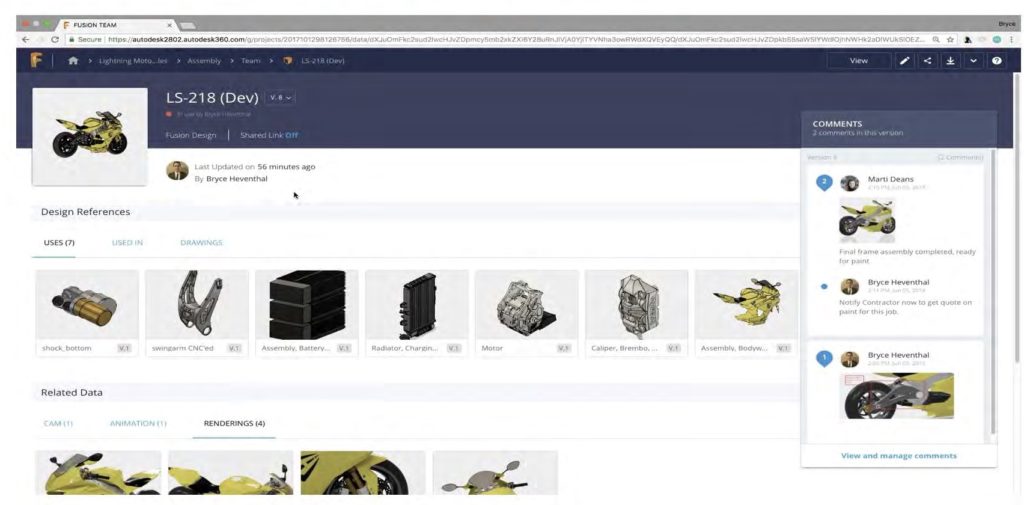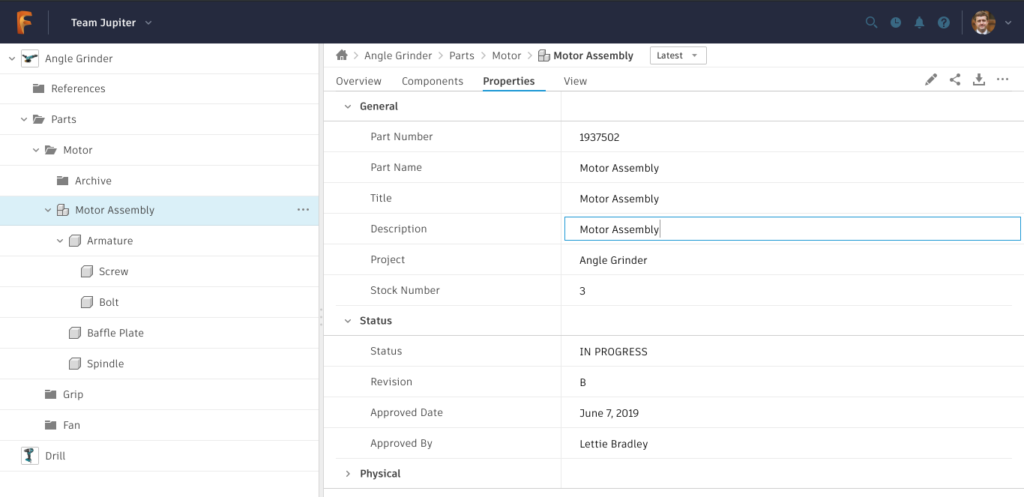
It has been seven years since Autodesk introduced Fusion 360. I checked my old blog – What Fusion 360 means for PLM. Check it out if you missed that back in 2013. There are 3 things that put Fusion 360 outstanding of everything else in this market – (1) business model; (2) cloud foundation; (3) functional richness. Fusion 360 subscription is not $25 as it was back in 2013, but still, it is almost impossible to beat Autodesk Fusion 360 value proposition in the market.
A quick jump in 2019. I captured the following slide from the presentation made by Scott Reese, SVP Manufacturing, Cloud and Production Products at Autodesk Investor day 03/18/2019. Check it out here. Here is the slide that captured my attention.

Autodesk Fusion 360 collaborative capabilities and data foundation is the place to watch in my view. A few articles I published in the past can give you an idea about Fusion360 development trajectory – How Fusion360 and Onshape are solving fundamental collaboration problems. Cloud CAD and data management overhead.
Yesterday, my attention was caught by Fusion 360 roadmap updates from October 2019.
There are tons of enhancements, but one is very important if you think about data management and as a foundation of cloud CAD collaboration and process management. Check the part about Extended Properties for Team Collaboration. Here are a few interesting passages and pictures.
A major advantage of Fusion 360’s cloud capabilities is how easy it is to collaborate with your team members. We’re extending component properties so that when properties of a part is updated within Fusion 360, it is also updated on Fusion Team, (and vice versa) so that you can generate parts lists faster and more accurately.
The experience in Fusion Team also gets a major update with Navigation improvements, exposure of local components (with properties!) and enhanced history experience that makes it easy to track model vs properties changes.


Data is a foundation of everything. By defining data schemas you can set a foundation for capturing information and management of processes. You can see how it happened in some other CAD systems – flexible property data management (eg. Solidworks) created a rich foundation for application development and data capture. For example, at OpenBOM, we extract all data properties from CAD models to create a foundation of Bill of Materials management (disclaimer – I’m CEO and co-founder of OpenBOM)
Fusion 360 is growing its data foundation as a standalone feature. It is part of Forge cloud platform capabilities, which can connect different pieces together. Autodesk is not saying anything about Fusion Lifecycle (former PLM 360) in the context of Fusion 360 data management capabilities. My hunch that these products might be going separate tracks. I’m coming to AU 2019 in less than a month and hope to give you more updates afterward.
What is my conclusion? Fusion 360 build on top of Autodesk Cloud Platform (Forge) is an interesting and promising example of how cloud technologies combined with the business models and rich functionality can create a differentiation in the market. The jury is still out and there are many questions Autodesk needs to answer – functions of Fusion 360 compared to Inventor, PDM and PLM functions such as change management, revisions, and BOM management, etc. Autodesk Fusion 360 has an interesting trajectory to watch. Just my thoughts…
Best, Oleg
Disclaimer: I’m co-founder and CEO of OpenBOM developing cloud-based bill of materials and inventory management tool for manufacturing companies, hardware startups, and supply chain. My opinion can be unintentionally biased.
The post Where to Autodesk Fusion 360 goes? appeared first on Beyond PLM (Product Lifecycle Management) Blog.



Be the first to post a comment.